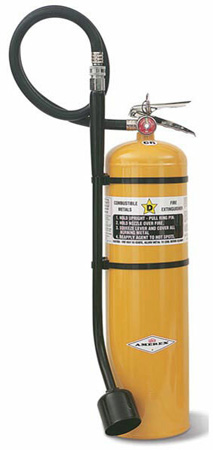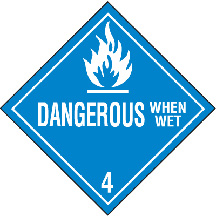| The Home page of ILPI's Safety Data Sheet (SDS) Resource, the leader in SDS information since 1995! | |
| The history and philosophy behind this resource. | |
| A curated collection of books and reference materials concerning Safety Data Sheets and closely related topics. | |
| Paste your plain text SDS into the SDS-Demystifier, and it will be converted into a hypertext-enriched document with links to detailed explanations of each key term. | |
| An extensive list of frequently asked questions about Safety Data Sheets including regulations, content, compliance, and more. | |
| A humorous take on Safety Data Sheet jargon. Fill in the blanks on our entry form to generate a personalized Unsafety Data Sheet to share with your coworkers. | |
| Since 1995, we've maintained this massive curated list of the best places to find Safety Data Sheets on the Internet. | |
| You are here! Way more than a glossary, this hypertext-enhanced resource covers hundreds of SDS-related terms and expert knowledge. Each entry includes both the SDS relevance and links to additional authoritative resources. | |
| Archived results of Safety Data Sheet related polls taken by some of our millions of site visitors | |
| The OSHA regulations behind SDS regulations, including the inspection guidelines and over 400 official interpretations letters under the Hazard Communication Standard | |
| Commercial suppliers of SDS authoring and management software as well as cloud compliance services. | |
| Commercial companies that will create SDS's for your specific needs as well as SDS translation companies. |

Safety signs, banners, and scoreboards? Get yours at Safety Emporium!
Definition
Water reactive substances are dangerous when wet because they undergo a chemical reaction with water. This reaction may release a gas that is either flammable or presents a toxic health hazard. In addition, the heat generated when water contacts such materials is often enough for the item to spontaneously combust or explode.
In simpler terms, water reactive materials are incompatible with water.
Additional Info
Dangerous when wet materials are classified as R2 under the UN classification system and as Hazard Class 4.3 by DOT under 49 CFR. Special precautions, labeling and training are therefore required when transporting, storing and using such materials.
Examples of water-reactive chemicals include alkali metals, alkaline earth metals, anhydrides, certain carbides, hydrides, sodium hydrosulfite, and similar chemicals. An example of the chemical reaction of sodium metal with water is given below:
2 Na(s) + 2 H2O  2 Na+(aq) + 2 HO-(aq) + H2(g)
2 Na+(aq) + 2 HO-(aq) + H2(g)
The heat generated by this reaction is sufficient in most cases to ignite the hydrogen gas (H2) that is evolved in the reaction. This can result in a powerful explosion depending on the amount and surface area of the alkali metal. Elemental potassium and cesium are particularly dangerous in this regard; even one gram can cause a serious hazard.
Another example of a dangerous when wet substance is aluminum phosphide which reacts with water to release highly toxic phosphine gas, PH3. This chemical reaction is commercially exploited to kill moles and related pests:
2 AlP(s) + 3 H2O  Al2O3(s) + 2 PH3(g)
Al2O3(s) + 2 PH3(g)

Get your Class D and other specialty extinguishers from Safety Emporium.
Thus, it is critical that water reactive substances be stored in dry areas and kept off the floor by the use of pallets or rack storage. Dangerous when wet materials should never be stored directly beneath active water sprinklers and should be isolated by a waterproof or water-resistant barrier (e.g., plastic sheeting or a water-tight secondary container) to protect the materials from water in the event the sprinkler system is activated elsewhere in the facility.
Likewise, these materials should be stored in the original shipping container or in a compatible container of equal or greater strength. Prior to storing reactive materials, all combustible rubbish, dry or oiled paper wrapping material, and other combustible materials should be removed from the storage area. The area should be conspicuously marked or posted to indicate the material being stored. Access to the reactive materials storage area should be restricted. Personnel should not be permitted to enter the area unless accompanied by an individual familiar with the hazards of the material stored in the area.
There are additional classes of reactive compounds under the UN and DOT classification schemes, such as pyrophoric substances. Therefore, further segregate such materials within your Reactive Storage area.
Finally, make sure that an appropriate Class D fire extinguisher is available in the event of an emergency and that personnel have been trained in the proper way to deal with fires involving water reactive materials. Water should not be used to fight fires that involve water-reactive materials. In addition, many water-reactive chemicals are also reactive with carbon dioxide, another common fire-fighting agent.
SDS Relevance
Water-reactive materials pose serious hazards and significant risks. The Safety Data Sheet will provide information about these hazards in Section 10 (stability and reactivity) as well as specific firefighting measures in Section 5 (fire-fighting measures). Additional health and handling concerns can be found in Sections 4, 6, 7, 8, and 11.
Make sure that your water-reactive materials are well-marked so that fire fighters and other personnel are aware of the danger in an emergency situation and be sure to have a proper Class D fire extinguisher on hand.
Further Reading
- MIT has a great writeup on Pyrophoric and Water-Reactive Chemical Safety.
- The US DOT's Pipeline and Hazardous Materials Safety Administration has a Table of Water-Reactive Materials Which Produce Toxic Gases starting on page 334 of their 2020 Emergency Response Guidebook (3.4 Mb PDF file).
- Lawrence Berkeley National Lab has a good primer on Control Procedures for Reactive Chemicals that covers peroxides and water reactive chemicals...and just about every other lab safety concern.
- NOAA has a page devoted to the reactivity of various clases of chemicals with water titled Water and Aqueous Solutions. Their CAMEO tool has lots of data sheets such as this one for Metal Hydrides, Water-Reactive N.O.S.
See also: Anhydrous, flammable solid, hyroscopic, pyrophoric.
